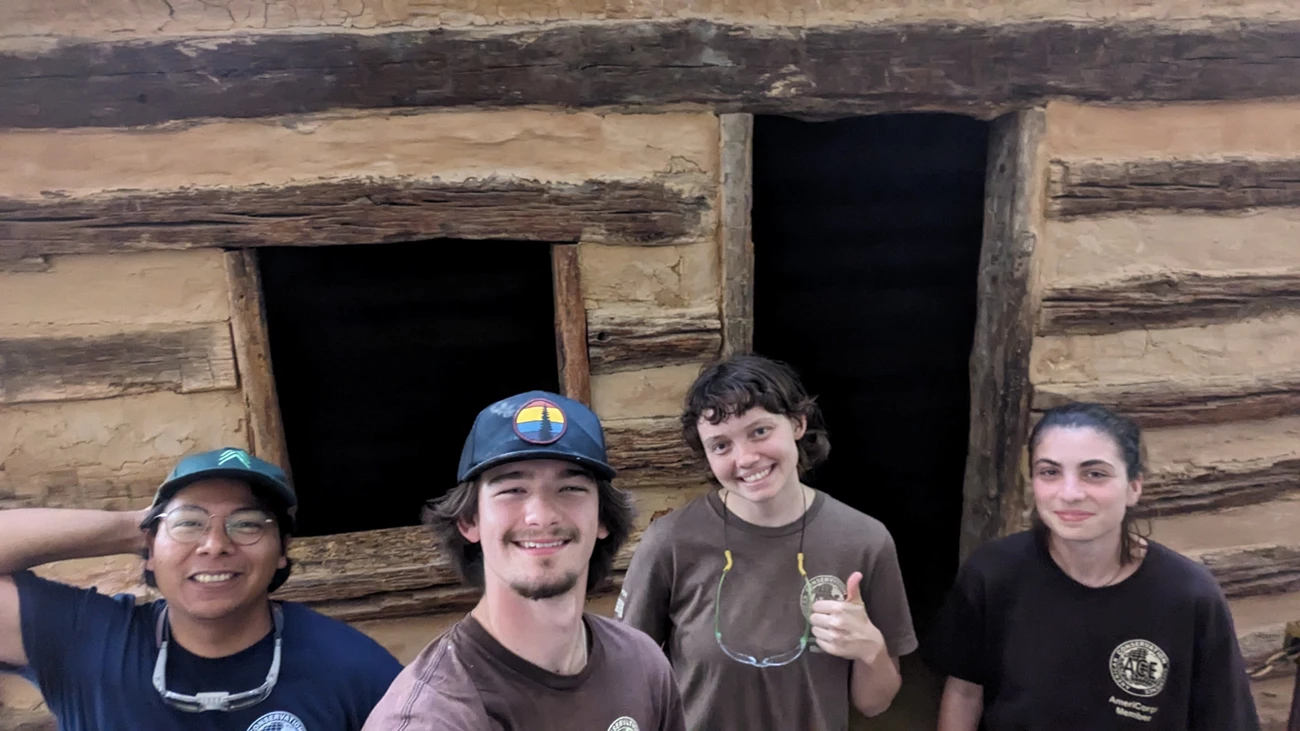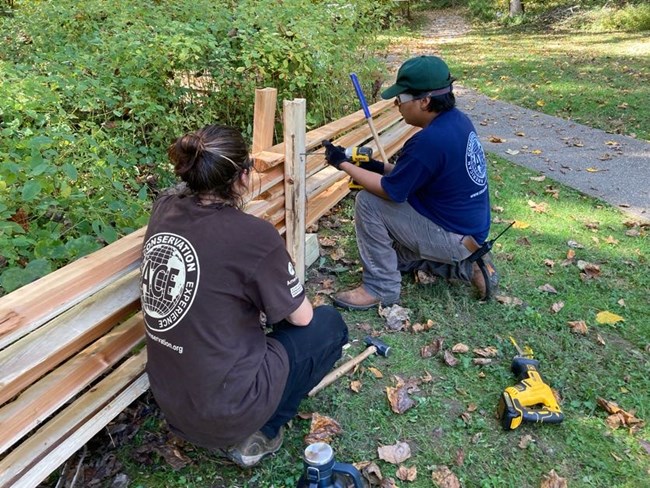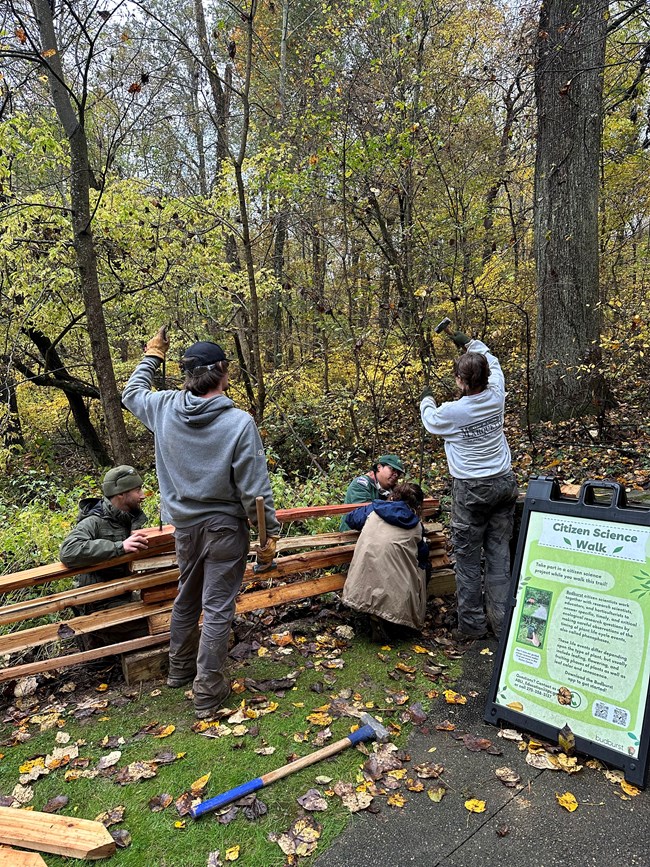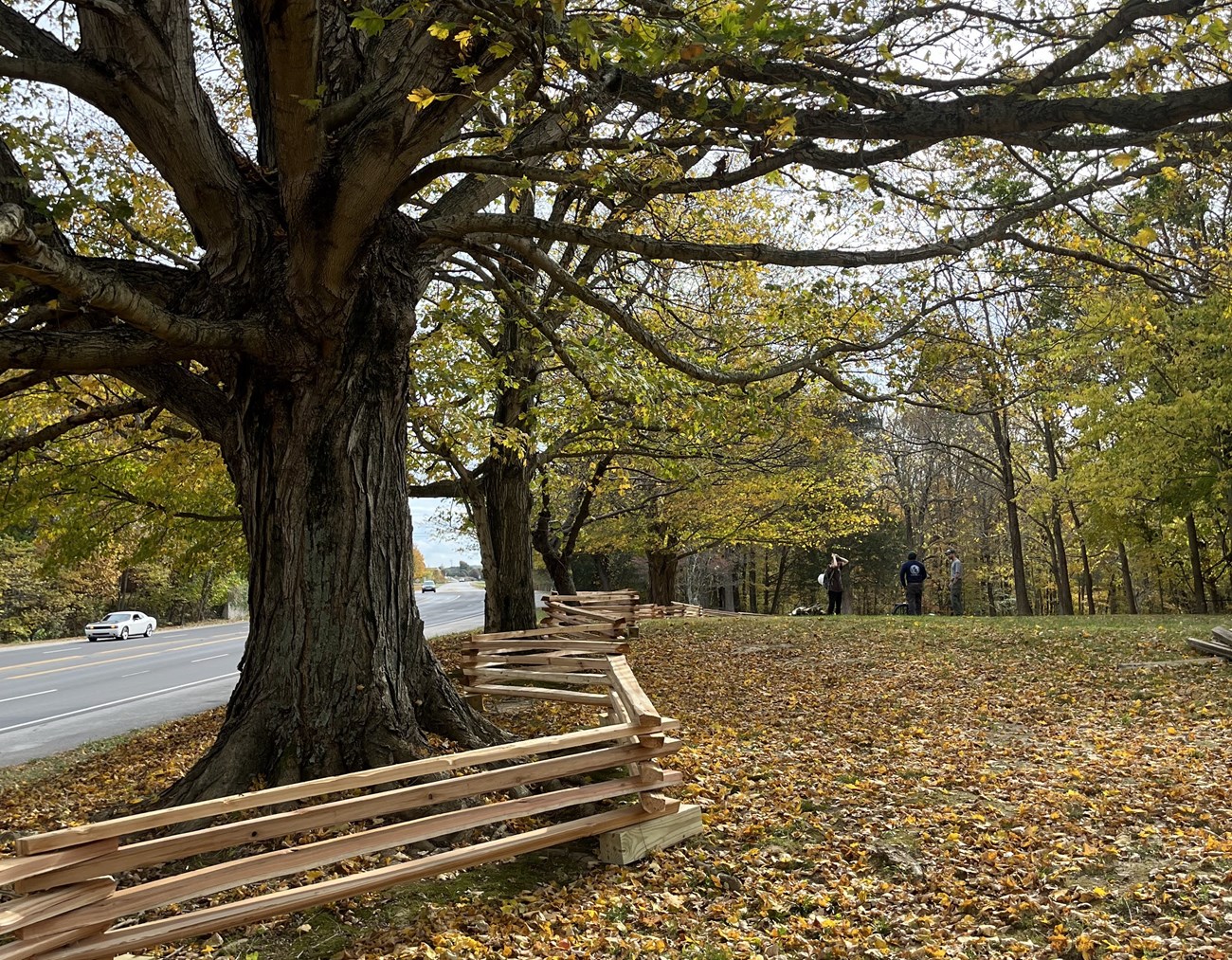Part of a series of articles titled Youth Maintenance Action Team Projects.
Article
American Conservation Experience Members Gain New Technical Skills and Strengthened Sense of Public Land Stewardship Through Replacing Split Rail Fencing at Abraham Lincoln Birthplace National Historical Park

NPS Photo
Meet Marcos Perez and Kira Young, two American Conservation Experience members, who recently served at Abraham Lincoln Birthplace National Historical Park in Kentucky on a Great American Outdoors Act (GAOA) Maintenance Action Team (MAT) project. Marcos and Kira, along with others, helped remove the existing split rail fencing that is in poor condition, and replaced it with a historically accurate fence.
Marcos is originally from Los Angeles, California, and he has been travelling across the country, working with various conservation corps, while gaining valuable transferrable skills. For him, supporting the planet through projects like these ensures people remember their roots, as they appreciate the national park lands for its beautiful natural and cultural resources. “I love working out in nature, so I stuck with it as I travelled, and as a result, it's my bread and butter. I can't think of going into any other career except conservation.” Kira is from Durham, North Carolina. She had the desire to work in conservation and found herself getting engaged with this project soon after joining ACE.
Working on a small size project and nonetheless important task of replacing this fence helps Abraham Lincoln Birthplace National Historical Park continue to preserve and protect the significant cultural resources associated with Abraham Lincoln’s birth, early boyhood, and memorialization. It also provides visitors with an opportunity to experience and understand this period in the 16th President’s life. The entire park is part of the National Register of Historic Places (NRHP), which is an official list of the nation's historic places worthy of preservation. The NRHP is authorized by the National Historic Preservation Act of 1966. The National Park Service's National Register of Historic Places is part of a national program to coordinate and support public and private efforts to identify, evaluate, and protect America's historic and archeological resources.
Read on for Marcos’ and Kira’s reflections on their experiences with this MAT project.
Marcos is originally from Los Angeles, California, and he has been travelling across the country, working with various conservation corps, while gaining valuable transferrable skills. For him, supporting the planet through projects like these ensures people remember their roots, as they appreciate the national park lands for its beautiful natural and cultural resources. “I love working out in nature, so I stuck with it as I travelled, and as a result, it's my bread and butter. I can't think of going into any other career except conservation.” Kira is from Durham, North Carolina. She had the desire to work in conservation and found herself getting engaged with this project soon after joining ACE.
Working on a small size project and nonetheless important task of replacing this fence helps Abraham Lincoln Birthplace National Historical Park continue to preserve and protect the significant cultural resources associated with Abraham Lincoln’s birth, early boyhood, and memorialization. It also provides visitors with an opportunity to experience and understand this period in the 16th President’s life. The entire park is part of the National Register of Historic Places (NRHP), which is an official list of the nation's historic places worthy of preservation. The NRHP is authorized by the National Historic Preservation Act of 1966. The National Park Service's National Register of Historic Places is part of a national program to coordinate and support public and private efforts to identify, evaluate, and protect America's historic and archeological resources.
Read on for Marcos’ and Kira’s reflections on their experiences with this MAT project.
How Was Your Project Experience?

NPS Photo
Kira: Our crew was responsible for dismantling a portion of the old historical fence and constructing a new fence after drilling and preparing the materials required to build it. It felt very gratifying to work on this historical site because we were part of the work getting done and were able to see the progress. We also encountered visitors who took a lot of interest in the project and our work. This project was a particularly cool experience as there were many educational opportunities. The site itself was informative with all the signs and facts about Lincoln’s life. The project partner’s enthusiasm about improving the site was contagious.
How Did You Learn and Grow?

NPS Photo
Kira: This project certainly presented me with opportunities to expand my technical skills. I had never built a fence before and there were many tools involved that I hadn’t used before. Both my crew and the project partners were super patient and helpful, which made the learning process so much easier and enjoyable.
What Was the Impact on the Community

NPS Photo
Kira: I think the restoration of historic sites like Lincoln’s Birthplace National Historical Park helps to create a more accessible environment in terms of historical and outdoor recreation. It gives one an overall environmental education. It presents the community with an important opportunity to connect with nature. Putting time and resources into restoration, I think, reflects a level of care that makes others more eager to be a part of the project and site. It seems to spark an interest when people can see that a lot of work is being done to maintain these landmarks, inviting them to engage. When more people learn about the history of a place, it brings us together to preserve and appreciate the environment.
This maintenance of the landscape demonstrates the park’s good stewardship, dedication, and commitment to preserving park lands while providing outdoor access to the public.
Follow along with us as we share new stories about youth-specific MAT projects in this article series. Have a question about Youth or Young Adult Programs? Please e-mail us. Learn more about what we do. Be sure to follow us on Facebook, Twitter, and Instagram.
Last updated: December 19, 2023
